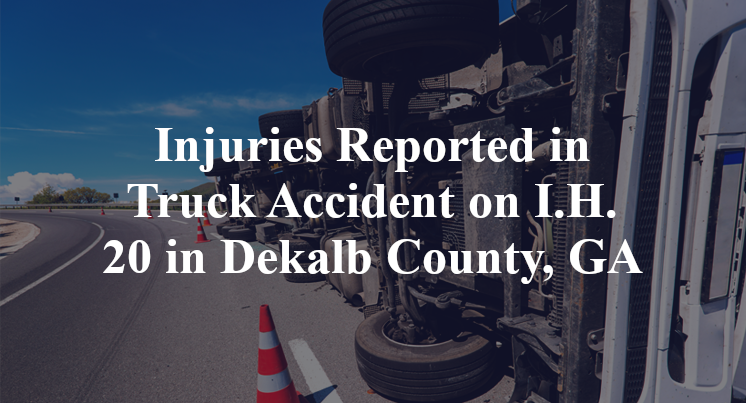Injuries Reported in Truck Accident on I.H. 20 in Dekalb County, GA
Lithonia, GA — May 16, 2025, at least one person was injured in a truck accident at approximately 3:00 a.m. along Interstate Highway 20.
According to authorities, the accident took place in the westbound lanes of I.H. 20 in the vicinity of Panola Road.

Details surrounding the accident remain scarce. Officials indicate that, for as yet unknown reasons, an 18-wheeler hauling tandem trailers was involved in a collision with a sedan. Photographs of the scene which have been published in the news show one of the truck's trailers overturned onto its side.
Reports state that at least one person suffered injuries of as yet unknown severity. Additional information pertaining to this incident—including the identity(s) of the victim(s)—is not available at this point in time. The investigation is currently ongoing.
Commentary
In my 30 years of litigating truck accident cases, I’ve seen how dangerous tandem trailer configurations can be—especially when something goes wrong at highway speeds. When an 18-wheeler hauling two trailers ends up in a collision with a sedan and one of those trailers overturns, the most important questions center around how the truck was being handled, and whether it was stable and under control in the first place.
Tandem trailers don’t behave like single-trailer rigs. They take longer to stop, require more room to maneuver, and are more prone to instability—especially during lane changes, evasive maneuvers, or sharp braking. If the truck swerved or had to adjust quickly for any reason, it’s entirely possible that one of the trailers began to swing or tip. That’s a scenario I’ve seen play out more than once, and it often stems from the truck being operated at the edge of what its configuration can safely handle.
Another issue to look at is the way the trailers were loaded and connected. Were they balanced properly? Was the coupling secure? Were the axles adjusted for stability? These are the kinds of technical details that don’t show up in the initial crash reports but can make the difference between a safe delivery and a dangerous rollover. In past cases I’ve handled, poorly distributed loads or faulty trailer connections turned what should have been routine highway travel into a multi-vehicle wreck.
And because this truck was likely part of a commercial fleet, the role of the trucking company must be examined. Did they train the driver specifically to handle tandem trailers? Did they monitor routes and conditions that might require extra caution? Did they perform regular inspections on the trailers and coupling systems? In my experience, companies often treat tandem operation as no different than standard loads—and that’s a mistake that can carry serious consequences.
Getting to the bottom of a crash like this means asking the right questions and refusing to stop at surface-level explanations. Serious wrecks deserve serious investigation, not assumptions. Understanding whether the truck was stable, whether the driver was trained for tandem hauling, and whether the company ensured the equipment was road-ready is key to figuring out what might have happened. Getting clear answers to these questions is the least that can be done to help those affected find the clarity and closure they deserve.

“These are essential reads for anyone dealing with the aftermath of a truck wreck”– Attorney Cory Carlson